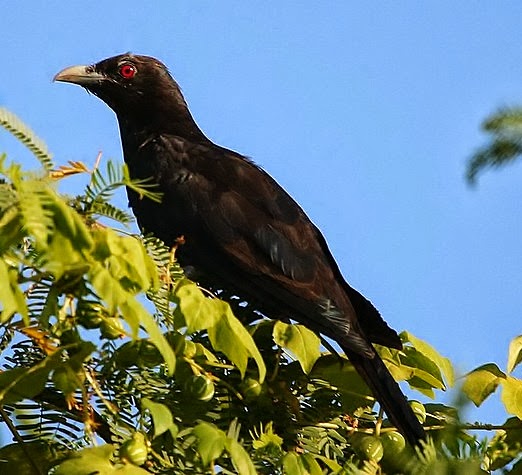 |
| (Photo from Top Yaps) |
Common name:
Asian koel (en); cuco-koel (pt); coucou koël (fr); koel común (es); koel (de)
Taxonomy:
Order Cuculiformes
Family Cuculidae
Range:
This species is found in south-eastern Asia, from southern Pakistan, through India, Bangladesh and Indochina, and into southern and eastern China, Indonesia and the Philippines.
Size:
These large cuckoos are 39-46 cm long and weigh 190-330 g.
Habitat:
The Asian koel is found in tropical rainforests and scrublands, plantations, rural garden and within urban areas. They are present from sea level up to an altitude of 1.500 m.
Diet:
They are omnivorous, taking fruits, various insects, eggs and small vertebrates.
Breeding:
Asian koels are brood parasites, laying their egg on the nests of other birds such as crows Corvus sp., mynas Acridotheres sp., black drongos Dicrurus macrocercus, Eurasian magpie Pica pica and black-headed orioles Oriolus larvatus, among others. The female lays a single egg on each nest, sometimes while the male distracts the host. The egg is incubates by the hosts for 12-14 days. Unlike other cuckoos, the chick will not try to kill the host’s chicks. It is mostly fed by the hosts, although in some cases the mother also provides him food, and fledges 20-28 days after hatching.
Conservation:
IUCN status – LC (Least Concern)
This species ha a very large breeding range and is described as common throughout most of its range, although less common in the Greater Sundas. The population is suspected to be stable in the absence of evidence for any declines or substantial threats.







